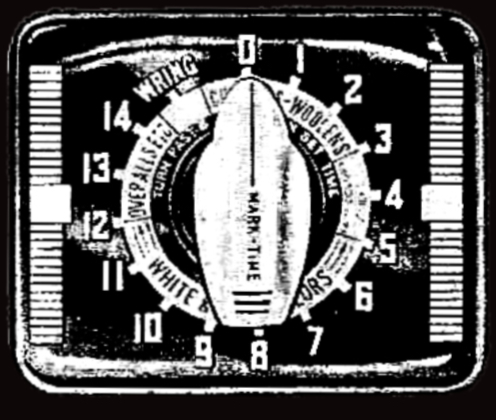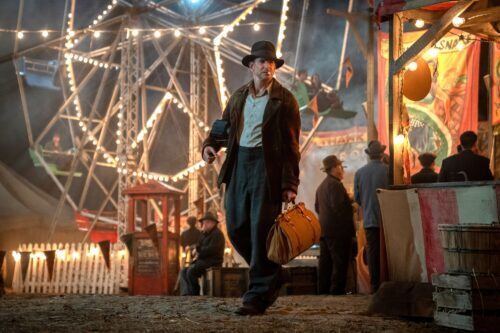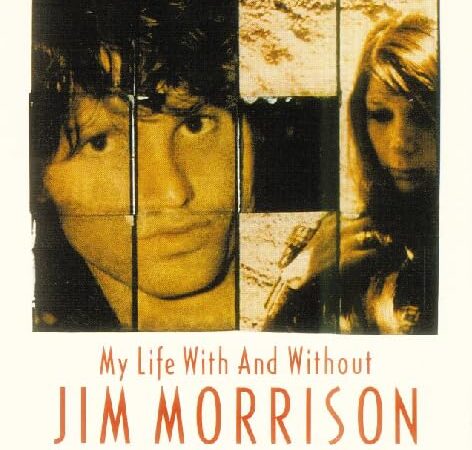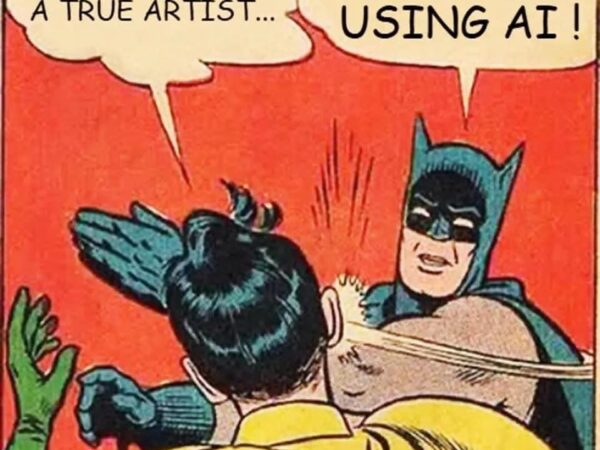
I’ll be upfront. I did not like Guillermo del Toro’s remake of Nightmare Alley. There. I’ve said it. Now, all my friends will hate me. It’s well known I hate remakes. Also, I regard Nightmare Alley, both the novel and 1947 movie, as absolute classics. Though I liked his earlier fables, I’m not a big fan of Guillermo del Toro. I find the bulk of his films bloated and on par with a video game. When I read about his plans for a remake on social media, I immediately type-screamed a resounding “NOOOOOO!”. Unfortunately, it was on the page of a horror novel/comic book writer. The writer objected to my objection, and the entire comic-con entourage clutched pearls, erupting in righteous outrage. Evidently, del Toro does no wrong for this fan group. I was the proverbial blasphemous skunk at the picnic. They reacted almost as badly as septuagenarian Dark Shadows fans over the sexuality of certain actors, which is terrible. In the spirit of fair play, when the movie dropped on HBO Max, I set aside a Saturday night to give it my full attention. Forgive me, but I tried to like it. I mean, I really tried. Sadly, I failed.
The movie is a remake of William Lindsay Gresham’s 1946 novel and 1947 film noir about the meteoric rise and fall of mentalist cum medium Stanton Carlisle. I’ll not rehash the plot here because I’m tired of typing. To sum up, a carny drifter makes good as a mentalist and cold reader. After seduction and possible homicide, Carlisle steals the secret code used by two older carnival mentalists. From there, he advances to a two-show a night gig as a mentalist in posh nightclubs. At the Copa, he meets his match in the form of a grifty psychiatrist named Dr. Lilith Ritter. Finding stimulation in each other, they plot to swindle her wealthy clients, with Carlisle posing as a medium. Together, they plan a Big Bujo, the mother of all scams, on a wealthy industrialist/mobster tycoon named Grindle. All is going according to plan until Carlisle’s accomplice/wife, the good-hearted Molly, balks in mid-performance. She blows up the deal, resulting in Stanton killing the wealthy industrialist. Now on the run, Stanton returns to Dr. Ritter only to be double-crossed. Ritter pulls the gypsy switch on Carlisle and steals his money, accomplishing her own Big Bujo. Ruined and on the lam, Stanton descends into alcoholism. As the movie ends, he returns to the carnival as a hobo, only to be offered a job as a geek.
Before I spit negativity all over the page, let me say something good about the film. Bradley Cooper does well with the script he’s given. His Stanton is a bitter, grizzled loner in perpetual despair. He does succeed in bringing his version of Stanton Carlisle to the screen in all his griftiness. I would have liked his Stanton to project more confidence when he crosses the road into spook shows and develops “shut-eye.” In this respect, Cooper’s Stanton comes up a little short. He appears to take more time convincing himself of his cold reading abilities than convincing others. There is one speed bump in this casting – Cooper is too old for the role. Stanton Carlisle of the novel was 21. In the 1947 version, he was played a youthful Tyrone Power, barely in his 30s. Cooper, as a middle-aged bum just discovering his gift for magic tricks, cold readings, and swindling folks, near age 50 and still being called “kid” by the sideshow owner, is a bit of a reach.
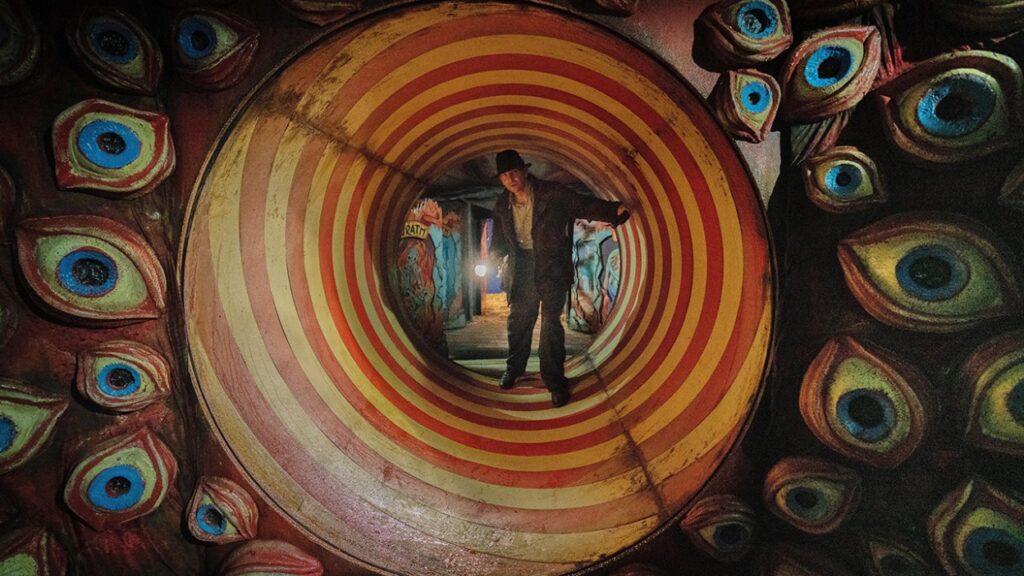
Ooops, that negativity seeped in. Let’s get back to the positives.
The rest of the cast is delightful. Toni Collette as the carney with a heart of gold, Madame Zeena, is just perfect. She exceeds Joan Blondell’s performance in the original film. Sadly, her role is diminished. Instead of expanding the character’s role, her time on the screen seems more limited. Willem Defoe cavorts gleefully as the greedy 10-in-1 owner Clem Hoately. Rooney Mara rounds out this cast as the somewhat prematurely tired carney ingénue, Molly.
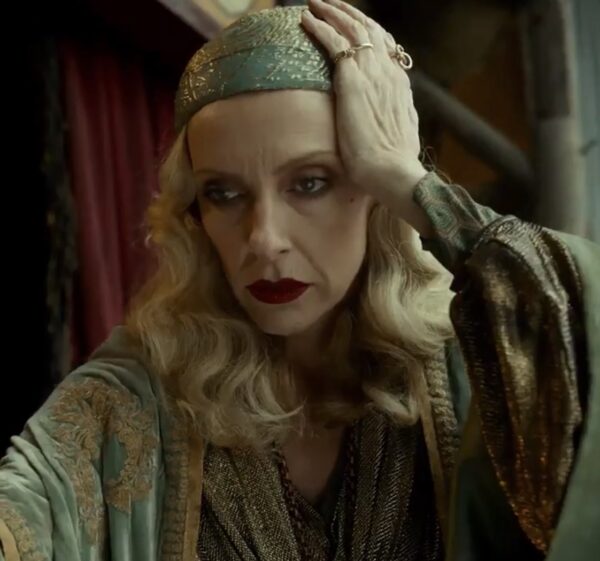
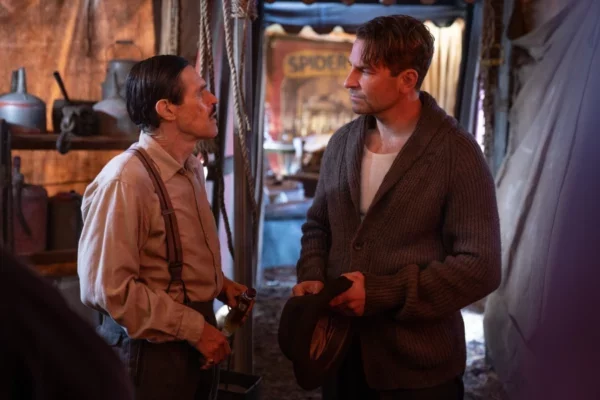

Now for the showstoppah, the maaain eventah, and she deserves a whole paragraph. As the evil Dr. Lilith Ritter, Cate Blanchett is a spectacle and a carnival unto herself. She chews the scenery to no end, hams it up, and we love it – because she is Cate Blanchett, and she can do as she damn well pleases. Cate’s Lilith doesn’t do anything simply. Her Dr. Ritter slouches, slinks, saunters, drapes herself over divans, growls, and smolders all over her art deco palace/office. She strikes poses, and we can see Blanchett in every role she’s ever played. Dr. Ritter may as well be overseeing the sinking of the Spanish Armada or stonily diminishing into the west in a Hobbit movie. We don’t care. Her over-the-top Lilith is evil and treachery incarnate, as visualized in the novel, packaged into a turbocharged demonic Lauren Bacall chassis. The more she overplays the role, the more we want, and Blanchett gives us both barrels of art deco-soaked vamping. Blanchett’s Lilith does everything but turn into a chrome Flying Goddess and ride off into the sunset on the hood of a passing DeSoto. We would still be entranced if she did and beg for more.
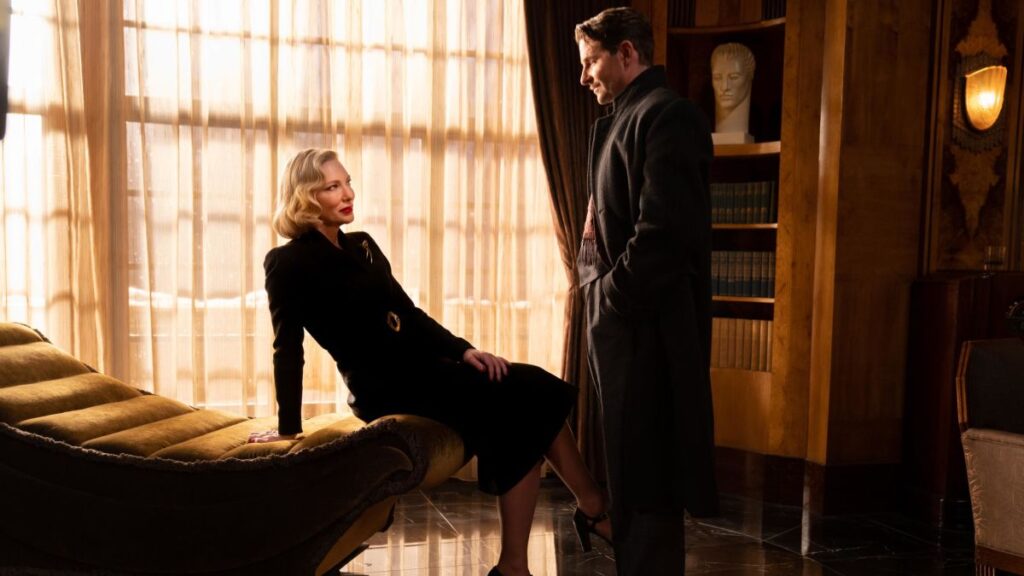
Del Toro is known for stunning visuals. He doesn’t disappoint. Nightmare Alley has stunning sets. So stunning the movie becomes a conveyance, a 1938 Buick pulling us through a Depression Era theme park. The carnival is a dark, seedy, phantasmagorial extravaganza. The funhouse was beautiful in its strangeness and unbelievable size and detail. Instead of painting with colors, del toro paints with German Expressionism shadows. Lilith Ritter’s office is the pièce de resistance of the movie. The warm caramel wood paneling washes over you like a café au lait, obscuring the treachery lurking in its hidden panels. This set was such a well-done art deco heaven that I forgave the diesel-punk tape recorder. It was beautiful, even if from 15 years in the future.

Now for all the things I disliked, and the list is long. Again, I tried to like this movie, but I couldn’t do it.
Sadly, by the time we get to Dr. Ritter’s office, this would be a perfect time to flee this film. The film drags after meeting Lilith. As we move through from the second into the third act, the story bogs down where it shouldn’t. This point is where a film noir starts the slow burn full of suspense before the climax. Sadly, this is where Nightmare Alley just slows as it goes off on wild tangents of flashbacks, subplots, and unnecessary detail. When we finally get to the part where Stanton meets Grindle, I was checking my watch and looking at my phone. The movie becomes too unfocused and scattershot at this point. It descends into a comic book/video game storytelling missing the entire point of the novel and original film.
Del Toro uses symbolism in his movies heavily. Nightmare Alley is awash in symbolism and not in a good way. Any idea of nuance fails in a profusion of nods to his reoccurring themes of good and evil, Catholicism, human monsters, all-seeing eyes, etc. Also in abundance are numerous Easter eggs to his past films. Both clutter the beautiful sets with unnecessary visual elements that have all the finesse of comic book call-out boxes. When the audience returns Dr. Ritter’s art deco Batcave, we are vainly searching the paneling’s Rorschach wood grain for hidden meaning. Finding none is annoying and insulting. We get it, we get it! Stop beating us over the head.
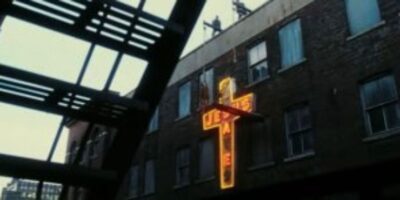
Even worse, this remake misses the central theme of greed and exploitation. Though this imaging sets up the perfect juxtaposition by placing the time frame in the period of the horrors of rapidly approaching WWII, Guillermo lets the opportunity to restate the theme slip through his fingers. Co-writer Kim Morgan admits she and del Toro shifted the focus to alcohol. Yes, this reemphasizes Gresham’s subtheme of co-dependence, whether it be alcohol or psychotherapy. However, it glosses over how this co-dependence is a symptom of a greater evil. Human greed causes unchecked exploitation and debasement of other human beings for no purpose other than personal gain. Shifting the blame to “demon rum” may appease the “it’s not my fault” generation, but in the end, it trivializes the real problem and the root of all evil – greed.
Violence is nothing new in del Toro’s movies, but in Nightmare Alley, it’s simply unnecessary and departs from the original canon for no purpose. It adds nothing to the story but pointless squirm in an already squirmy story. Why is Stanton beating people to death? Why is the geek in chains and a cage? That’s kidnapping. Be real. Geeks were simply drunks sleeping off a toot until the next show when they would geek for another bottle or get the DTs. That’s debasing enough. Here, it’s a pointless nod to torture porn.
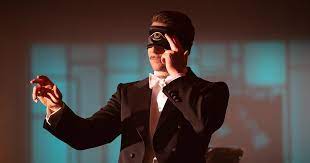
Yet another missed opportunity was a part of the novel that del Torro neglects– Stanton, as he embarks on his spook show mediumship, becomes an ordained minister (for $2) and the head of his own Spiritualist Church. (Yes, there still is such a thing.) He then merrily grifts grieving people of money and widows of homes. In a world full of self-proclaimed prophets doing the same thing, del Toro could have taken this part of the novel and run with it without the fear of 1947 censorship. Guillermo could have worked out 50 years of issues with the Catholic Church by using this sub-arc, and it would have been enlightening. Alas, it remains the road not taken.
Carlisle and Ritters’ daddy/mommy Freudian issues were good in the novel. However, in del Toro’s vision, we waste at least 20 minutes on this old saw for no reason. The audience already knows Stan is a crumb, and Lilith is a manipulating bitch. Yet we must endure Stanton’s prolonged flashback of murdering his father by letting him freeze to death, burying him under the floorboards, and burning down the house. Carlisle’s revised, more contemporary theme of drunkenness and possible child abuse is somewhat trite. This figment of del Toro’s imagination is leftover dregs from an old horror movie. There are other, more relevant, slow-burn sub arcs available. We know Stanton has his demons that sent him on life as a con artist in the first place. Again, we are smart enough to get it.
Finally, what on earth possessed Guillermo to script the demise of Grindle at the hands of Stanton? This scene deprives the story of its ultimate revenge and the complete collapse of Carlisle’s schemes and self-image. In the novel and original film, revenge comes full circle as Dr. Ritter marries Grindle after double-crossing Stanton. He is shattered when he reads the news in an old paper while on the run from Grindle’s goons. Lilith has pulled the perfect Big Bujo. She gets the money, the whole bank, and a socialite status bonus. The Great Stanton reaps the dust and ashes of a common mark in utter calamitous failure. This revelation puts Stanton into the final downward spiral of alcoholism, where he abandons all hope and embarks on the road to carnival geekdom.
This revelation is the meat of the third act in this carnival hotdog of a movie. Sadly, del Toro muffs it and pulls the weenie out of the bun just as he wraps it up and hands it to the audience. Instead of watching the collapse of the Great Stanton as he faces the ultimate humiliation, we find Hobo Stan lining his shoe with an advert of Zeena, now a big-time seer. Saddening, indeed, but this is a minor twist without the impact. Zeena is back in act one and long forgotten by Stan and everyone else. This minor revelation isn’t enough to make Carlisle’s descent into the darkness of alcoholic geekdom believable. Instead of KO impact, we get a halfhearted pulled punch.
As we unwrap the finale, Guillermo leaves us with the bun and the works but no hotdog. It’s an unsatisfying conclusion. Perhaps del Toro was the wrong person for the project. He is known for his dark-themed movies. Painting with shadows is an art. However, when one makes an already dark subject even darker, one risks throwing the movie into pitch darkness. Maybe Del Toro developed his own “shut-eye.” Overconfident, he turned the lights off on the sound stage and left us lost in inky darkness with a flabby ending. We spend two and a half hours on this ghost train, only for the wheels to come off ten yards from the exit. It’s a major disappointment. It could have been so much more – a masterpiece instead of yet another big-budget Hollywood remake. Watch this film for great sets and Cate Blanchett. For the more forceful morality play, stick to the original 1947 movie.
[Edit: Yes, this film is up for yeaaa Oscars. I wish everyone well, whether I liked the film or not. Cate Blanchett should get an Oscar for the best line: “You are just an Okie with straight teeth.”]
